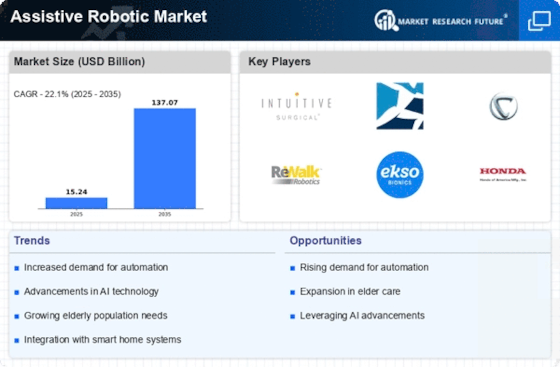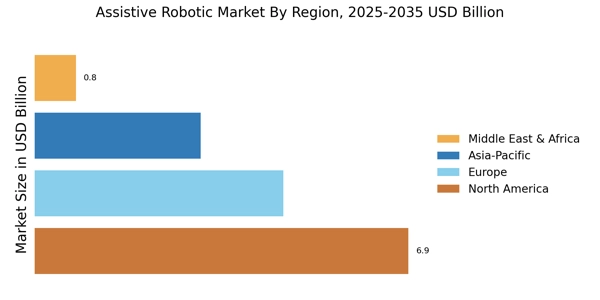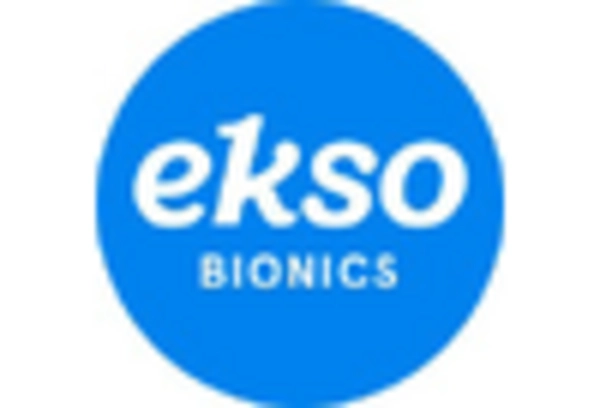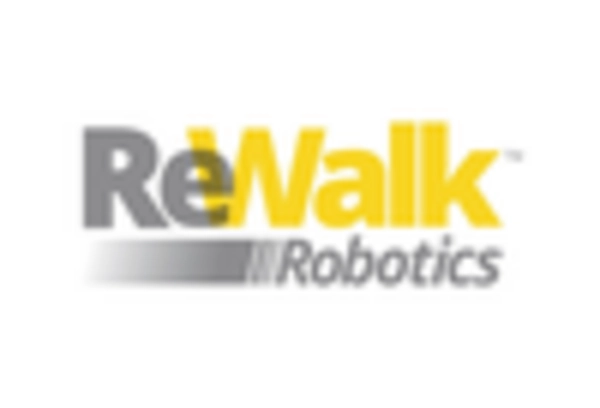Technological Innovations
The Assistive Robotic Market is experiencing a surge in technological innovations that enhance the functionality and efficiency of assistive robots. Advancements in artificial intelligence, machine learning, and sensor technologies are enabling robots to perform complex tasks with greater precision. For instance, the integration of AI allows for improved user interaction, making robots more intuitive and responsive to individual needs. According to recent data, the market for assistive robots is projected to grow at a compound annual growth rate of 25% over the next five years, driven by these technological advancements. This growth indicates a strong demand for innovative solutions that can assist individuals with disabilities and the elderly, thereby expanding the market's potential.
Cultural Shift Towards Independence
A cultural shift towards independence for individuals with disabilities is shaping the Assistive Robotic Market. Society increasingly values inclusivity and the empowerment of individuals to lead self-sufficient lives. Assistive robots are being developed to support this independence, providing users with tools to manage daily tasks autonomously. This shift is reflected in market trends, where the demand for personal assistive robots is expected to grow significantly, with projections indicating a market size of over 15 billion dollars by 2028. This cultural transformation not only drives innovation in assistive technologies but also encourages broader acceptance and integration of robots into everyday life.
Focus on Rehabilitation Technologies
The emphasis on rehabilitation technologies is a notable driver within the Assistive Robotic Market. As healthcare providers recognize the importance of rehabilitation in recovery processes, assistive robots designed for physical therapy and rehabilitation are gaining traction. These robots offer personalized therapy sessions, which can lead to improved patient outcomes. Market analysis indicates that the rehabilitation robotics segment is projected to grow at a rate of 30% annually, reflecting the increasing reliance on technology in therapeutic settings. This focus on rehabilitation not only enhances the effectiveness of treatment but also expands the market for assistive robotic solutions.
Rising Demand for Elderly Care Solutions
The aging population is a critical driver for the Assistive Robotic Market, as the need for elderly care solutions continues to rise. With an increasing number of individuals aged 65 and older, there is a growing demand for technologies that can support independent living. Assistive robots, such as robotic caregivers and mobility aids, are becoming essential in providing assistance with daily activities. Market data suggests that by 2026, the demand for assistive robots in elderly care could reach a valuation of over 10 billion dollars. This trend highlights the necessity for innovative solutions that cater to the unique needs of the elderly, thereby propelling the growth of the assistive robotic sector.
Increased Investment in Healthcare Robotics
Investment in healthcare robotics is significantly influencing the Assistive Robotic Market. As healthcare systems seek to improve patient outcomes and reduce costs, the adoption of assistive robots is becoming more prevalent. Hospitals and care facilities are increasingly integrating robotic systems for rehabilitation, surgery, and patient monitoring. Recent statistics indicate that the healthcare robotics market is expected to exceed 20 billion dollars by 2027, with a substantial portion allocated to assistive technologies. This influx of investment not only enhances the capabilities of assistive robots but also fosters innovation, thereby driving the overall growth of the assistive robotic market.

















Leave a Comment